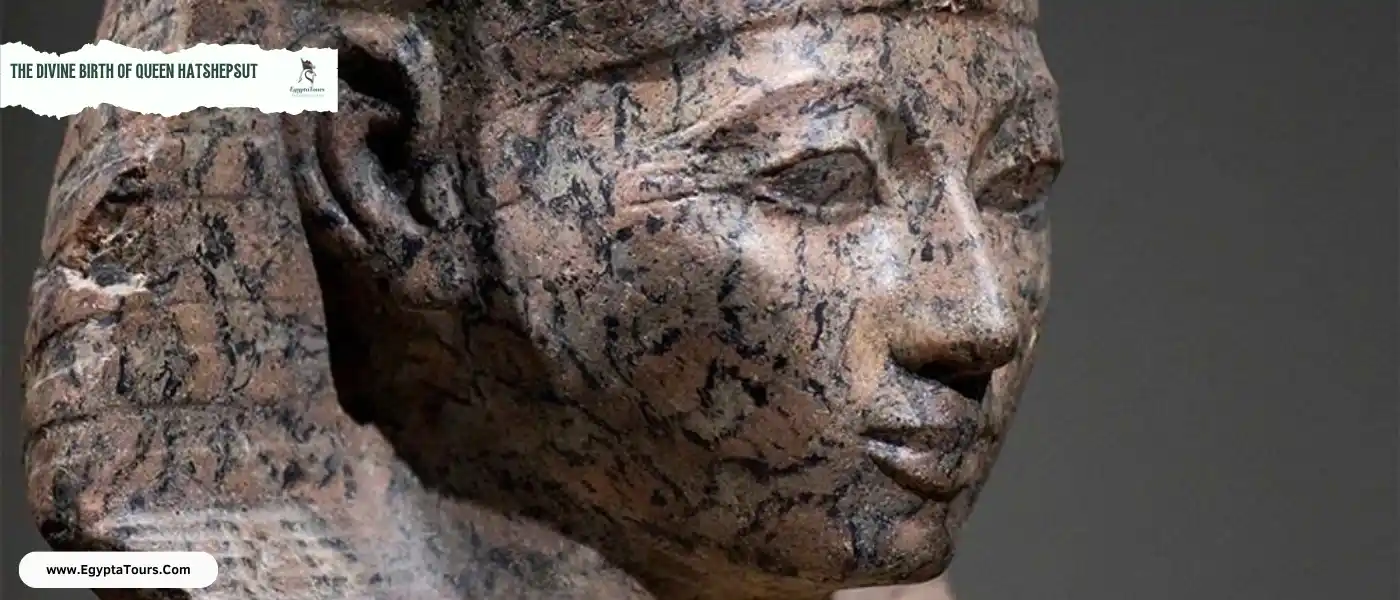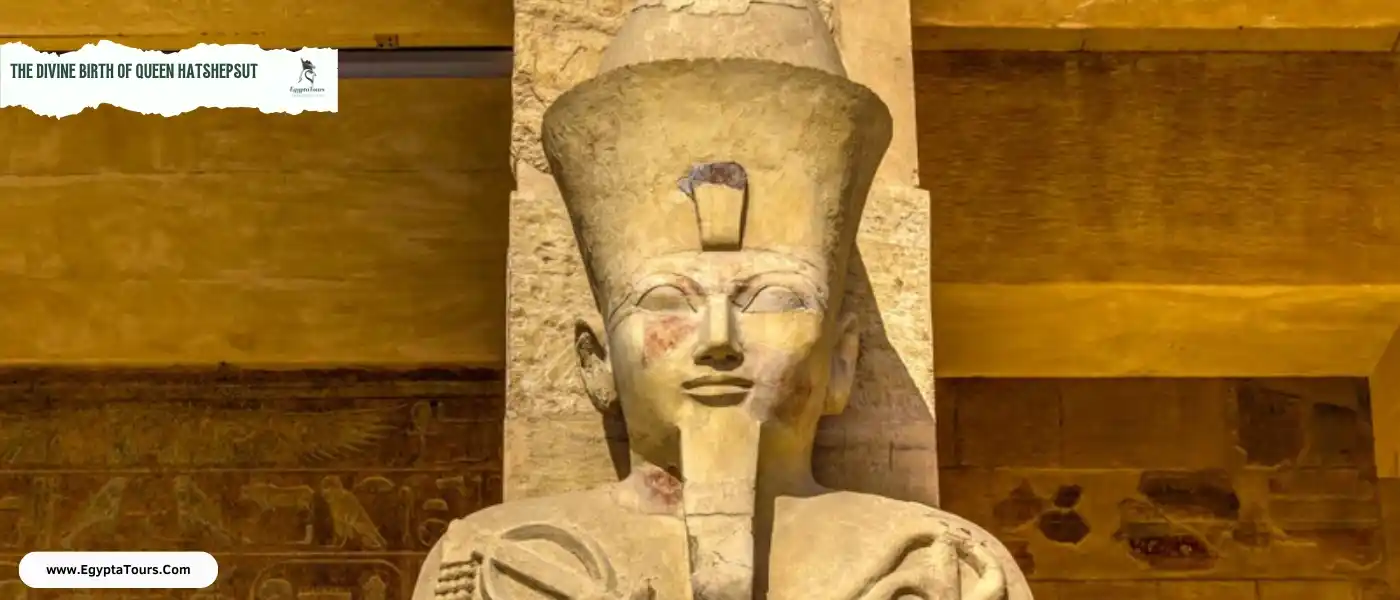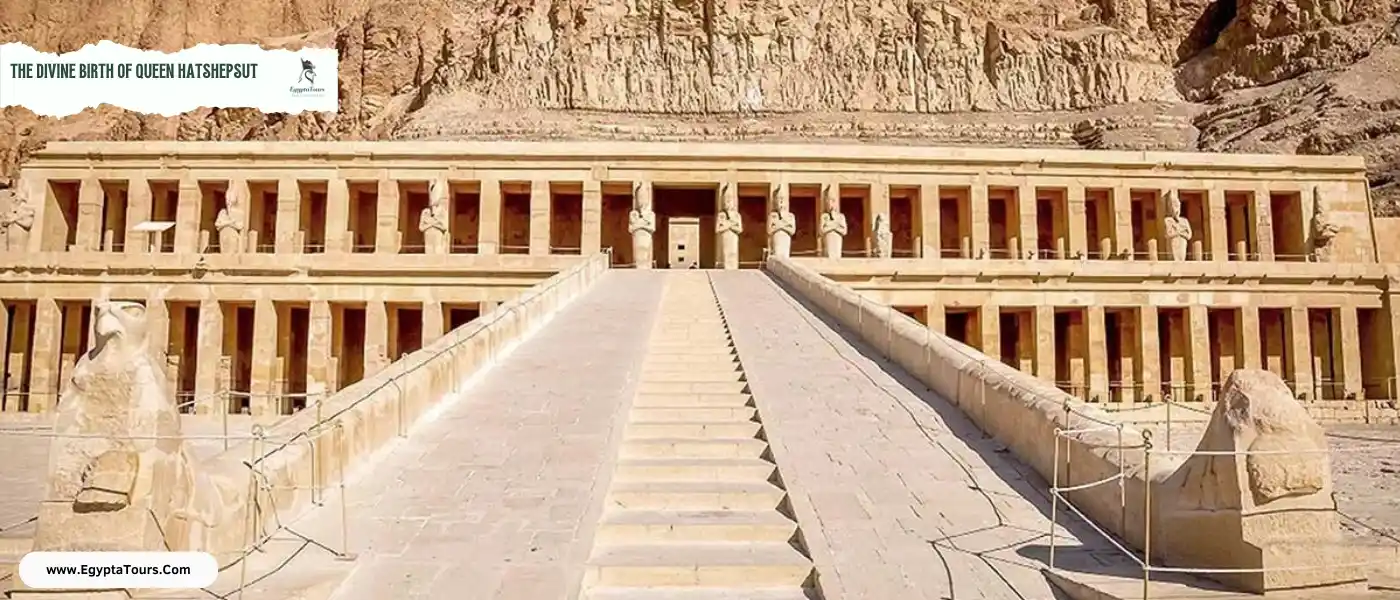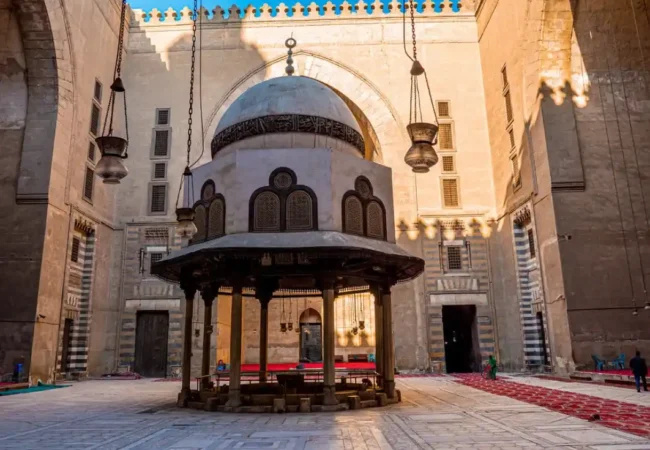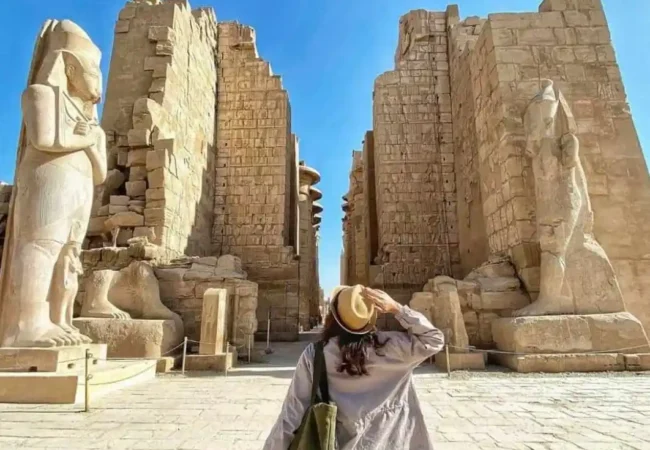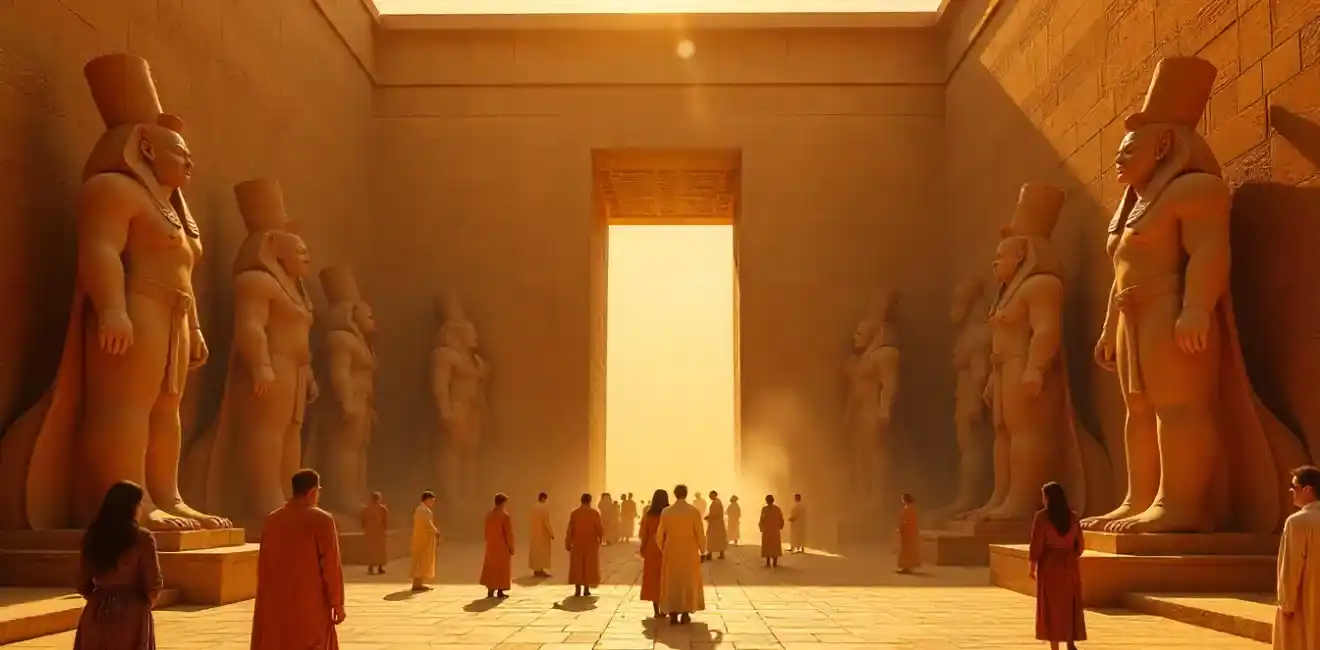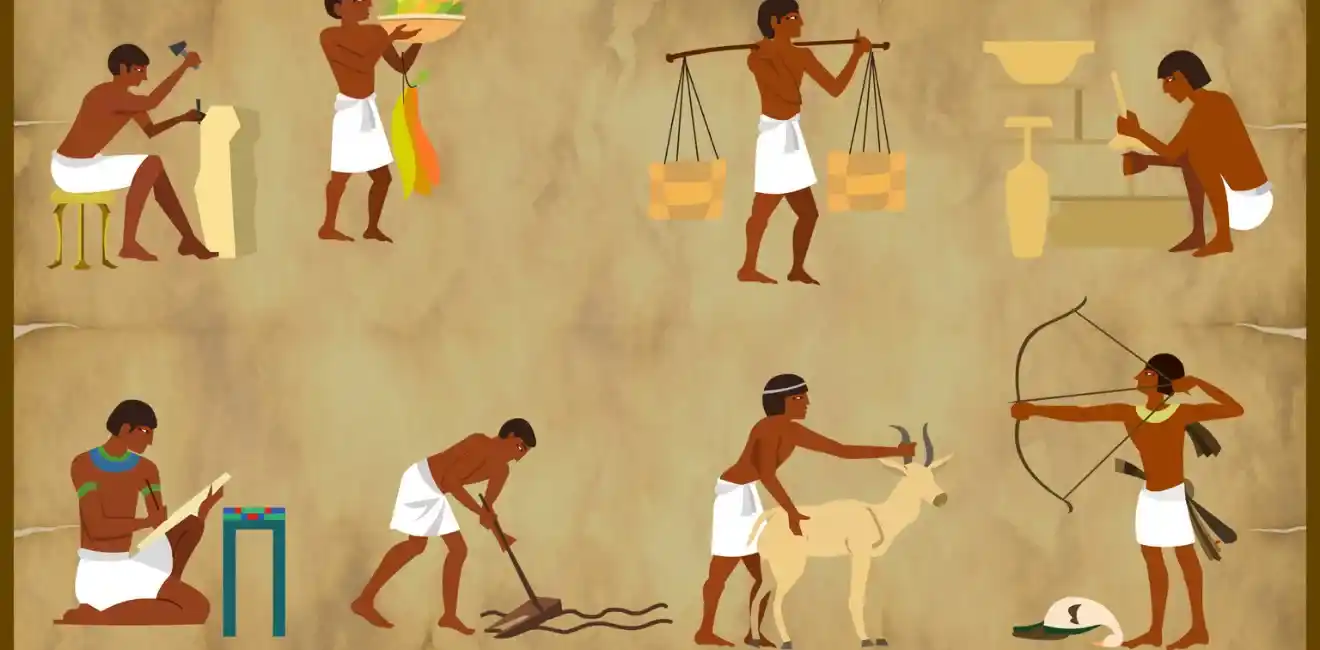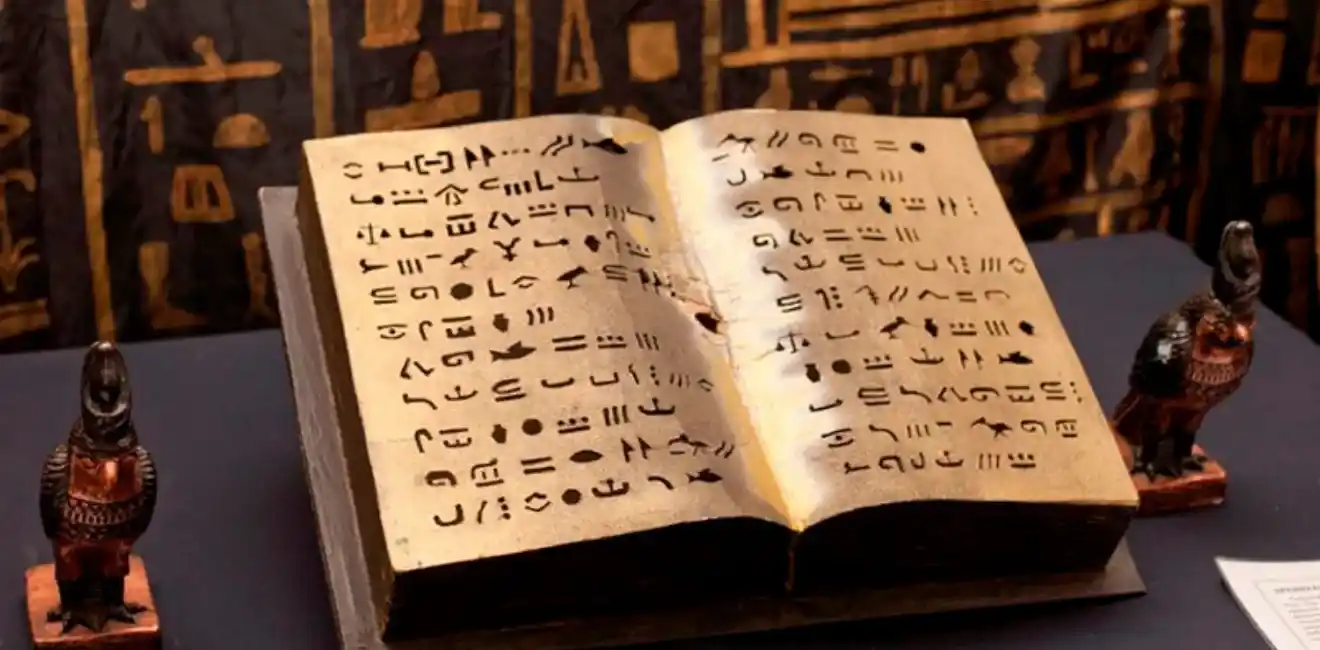
The Divine Birth of Queen Hatshepsut
The divine birth of Queen Hatshepsut was a great legend as this queen would remain one of the most important figures in the history of the pharaohs.
Her birth was divine and full of significance as she was the daughter of King Thutmose I and Queen Ahmose.
This created a royal myth in which royal blood was intertwined with divine power.
It was said that Hatshepsut was born under the auspices of the sun god Amun making her more than just a queen in the eyes of the people, but rather a goddess who simultaneously represented strength wisdom, and justice.
The myth of the divine birth of Hatshepsut is that the god Amun-Ra met with the goddesses of glory and destiny to express his great desire to send a divine offspring to rule the land of Egypt from the womb of a human woman.
His divine choice fell on Queen Ahmose making her a god through whom light would be born.
Amun-Ra himself approached her sat in a majestic aura before her, and with divine calm he brought the symbol of eternal life the ankh to her nose, as if breathing a new life into her.
Amun-Ra then turned to the god Khnum the divine maker of human bodies on the Wheel of Creation, and commanded him to fashion the body of his future child with divine care.
Then the goddess Heqet the giver of souls came to breathe life into that image uniting physical and spiritual strength into a single entity that carried the secret of the gods.
After the formation was completed, Khnum and Heqet united to stand by Queen Ahmose watching over her birth and assisting her until she was born. This divine child, who would later become Queen Hatshepsut the ruler of Egypt was created by the gods and born from the womb of humans.
When was Queen Hatshepsut born?
After discussing the details of the myth of the divine birth of Hatshepsut it is worth noting that Hatshepsut was born in 1508 BC the daughter of a great king Thutmose I, and a noble royal mother named Ahmose.
After the death of her husband King Thutmose II Hatshepsut assumed the reins of power first as regent for the young Thutmose III.
She then quickly asserted her authority over everyone declaring herself a fully sovereign queen and even the daughter of the god Amun.
Hatshepsut belonged to a great royal lineage. She was the granddaughter of Ahmose I the liberator of Egypt from the Hyksos and founder of the Eighteenth Dynasty.
Her pure royal lineage was one of the pillars of her legitimacy while Thutmose II, her husband and half-brother was the son of another wife Mutnofret.
Hatshepsut’s Educational Life
Hatshepsut grew up in a royal environment where the title of “princess” did not confer special privileges within the confines of education. Rather she was subjected to a strict educational system that emphasized discipline and equality.
From an early age she was trained in the arts of morality and proper behavior along with intensive lessons in writing reading arithmetic, and philosophy.
She was not exempt from religious rituals or grammar rules.
She received the immortal wisdom left behind by the Egyptian sages as sacred treasures, just as her half-brother Thutmose II, and the rest of the elite including the princes of the court and the sons of the country’s nobles did.
Her awe of her teacher stemmed not only from his strict nature, but also from his unforgiving treatment of everyone regardless of their rank or title.
This educational discipline to which the children in the palace were subjected shaped the moral structure of Egyptian society where the values of justice and equality prevailed among all without favoritism.
Hatshepsut was not treated as an exception because of the myth of the divine birth of Hatshepsut, but rather as a student subjected to the rules of the royal school just like any other child in Egypt’s schools.
School hours began at sunrise and ended at noon a system completely similar to that of modern Egyptian schools today.
The Story of Queen Hatshepsut’s Marriage
Hatshepsut was linked to her half-brother Thutmose II not out of love but out of political necessity to enable him to ascend the throne.
She bore him three children, but neither son lived long while her two daughters Neferure and Merytre Hatshepsut remained a testament to her legacy.
Thutmose II later had a son with a palace concubine named Iset, and this child would later become known as Thutmose III the Warrior King.
The Story of Queen Hatshepsut’s Reign
When Hatshepsut reached the age of twenty and learned of her myth of the divine birth of Hatshepsut she faced the first major shock of her life with the death of her father Thutmose I.
She suddenly found herself facing a struggle for the throne for which she was unprepared. Although she was the natural heir to the throne patriarchal traditions and the alliance of priests rejected the idea of a woman ascending the throne of Egypt alone.
She was forced to marry her half-brother Thutmose II who was physically and inexperienced to become a figurehead pharaoh while she managed affairs from behind the scenes.
Thutmose II lacked the courage to confront the southern rebellion himself and was content with issuing harsh orders to suppress it revealing his fragility as a ruler.
In reality Hatshepsut was the true leader of Egypt holding the reins of power with intelligence and steadfastness while her husband’s condition deteriorated day by day.
The priests and followers of Amun began plotting to pass the throne to Thutmose III the son of a palace concubine while he himself was plotting from within the Karnak Temple.
After the death of Thutmose II in 1501 BC an unexpected event occurred inside the Temple of Amun. The god’s palanquin stopped in front of a young man and refused to move.
Everyone considered that moment a divine sign that this young man Thutmose III had been chosen for the throne. However the situation was more complicated.
Hatshepsut was still alive, and fate was preparing her for her ascension to the throne.
What were the deeds of Queen Hatshepsut?
After the spread of the myth of the divine birth of Hatshepsut, Hatshepsut’s reign witnessed an unprecedented renaissance as prosperity and peace spread throughout Egypt transforming her into a thriving economic and military power.
Her achievements included:
- She led an urban and commercial revolution reopening neglected mines and quarries most notably the copper and malachite mines in Sinai.
- She restored Egypt’s maritime connection to the world by renovating a canal linking the Nile to the Red Sea enabling ships to sail for trade and prosperity.
- She built monumental architecture led by her famous temple at Deir el-Bahari and the magnificent structures at Karnak Temple glorifying the god Amun.
- Hatshepsut did not neglect her fleet rather she developed huge ships that helped transport giant obelisks and expand maritime trade.
- She introduced rare treasures to Egypt including aromatic plants spices wood hides, and even exotic animals raising the standard of living.
- The Atlantic Expedition An Egyptian fleet sailed under her command into the Atlantic Ocean to import unique species of fish and establish new trade relations.
- The Punt Expedition A historic voyage to the southern Red Sea (Somalia and Yemen) during which Egypt exchanged gifts for incense ivory, and ebony. This voyage is depicted on the walls of her temple.
- The Aswan Expedition Set out to bring granite from southern Egypt she oversaw the transport of two giant obelisks to Karnak each weighing over 300 tons.
- One of the obelisks was later transported to Paris and currently adorns the Place de la Concorde by order of Napoleon during his campaign in Egypt.
- Hatshepsut the originator of the myth of the divine birth of Hatshepsut also ordered the construction of the largest obelisk in history weighing over 1,000 tons. However, it was never completed due to a crack, and it remains in the Aswan quarry astonishing visitors from all over the world.
- Archaeologists and engineers still cannot explain how these obelisks were raised and transported.
The Death of Queen Hatshepsut
Hatshepsut passed away on January 14, 1457 BC after completing a twenty-two-year reign. Centuries later forensic and radiological analysis revealed that her death was not the result of a conspiracy or treachery.
Evidence suggests she was afflicted with one of the harsh diseases of the time such as cancer or diabetes.
The queen was buried in a mysterious deep tomb in the Valley of the Kings numbered KV20.
This tomb bears her personal imprint as it is believed she enlarged the tomb designated for her father so she could lie next to him.
FAQs
When was Hatshepsut born?
Queen Hatshepsut was born, according to the legend of the divine birth of Hatshepsut around 1507 BC during the Eighteenth Dynasty, a period when ancient Egypt began to witness one of its most brilliant eras of rule art, and architecture.
Has Hatshepsut’s tomb been found?
In 1903, the Valley of the Kings in Luxor witnessed an astonishing discovery when a mysterious mummy was found inside the tomb known as KV60. Its identity was unknown at the time, but it held great secrets buried over time.
After decades of research and investigation it was revealed that this mummy was none other than the legendary Queen Hatshepsut.
Did Hatshepsut abdicate the throne?
Hatshepsut did not rule the country throughout her husband’s reign, but rather watched from afar until his death. She waited seven years after her husband’s son Thutmose III.
Finally, we have mentioned everything about the myth of the divine birth of Hatshepsut, and over time, Hatshepsut has proven that her birth marked the beginning of a new era in Egypt’s history.
With a combination of wisdom and will she was able to leave her mark on the throne of the pharaohs proving that true power is not measured by gender or physical strength, but rather by the ability to make decisions that change the fate of nations.







